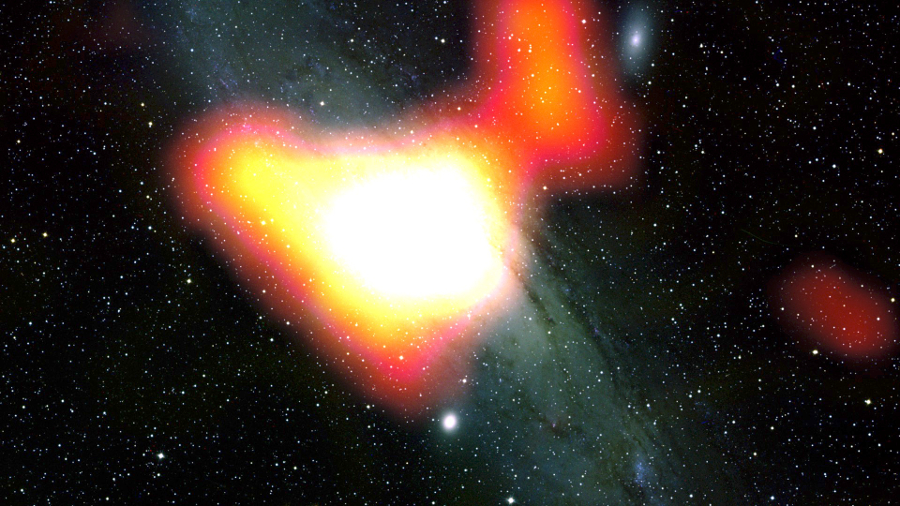
 Credit: NASA/DOE/Fermi LAT Collaboration and Bill Schoening, Vanessa Harvey/REU program/NOAO/AURA/NSF
Credit: NASA/DOE/Fermi LAT Collaboration and Bill Schoening, Vanessa Harvey/REU program/NOAO/AURA/NSF
Annihilating WIMPS in M31?
By far, the gravitational glue that holds galaxies together is provided by something called dark matter. No one knows what dark matter actually is, since it gives off little or no electromagnetic radiation, and so can only be detected by the effect of its aggregate gravity. Some scientist think that dark matter is composed of sub-atomic particles (whimsically calledd WIMPS, for "weakly-interacting massive particles"). Like normal matter, WIMPS can exist in both "matter" and "anti-matter" forms, and just like normal matter, if a WIMP collides with an anti-WIMP, the pair would annihilate, and the matter in the WIMP plus anti-WIMP would be converted to electromagnetic energy which we could, in principle, detect. The energy produced depends on the WIMP mass (times the speed of light squared), and many theories suggest that this annihilation radiation should be emitted in the Gamma-ray energy band. One of the goals of the Fermi Gamma-ray Space Telescope is to detect a Gamma-ray signal due to WIMP/anti-WIMP annhiliation. Astronomers using Fermi have now detected a unusual Gamma-ray signal from the Andromeda galaxy, M31. This Gamma-ray signal is unusual since it's confined to the center of M31 (as shown above), a location which is believed to have a high density of dark matter. This signal is similar to the mysterious Gamma-rays from the center of our own Milky Way. It's not clear that this signal is from dark matter annihilation, since it may be due in part or in whole to other more common sources, like a previously unidentified population of neutron stars or other compact objects. Astronomers are now dissecting this signal, determining how it varies with time and with Gamma-ray energy, and comparing its spatial distribution with the distribution of other identified sources, to help confirm the nature of these mysterious Gamma-rays.
Published: February 27, 2017
<
HEA Dictionary ● Archive
● Search HEAPOW
● Other Languages
● HEAPOW on Facebook
● Download all Images
● Education ● HEAD
>

Each week the HEASARC
brings you new, exciting and beautiful images from X-ray and Gamma ray
astronomy. Check back each week and be sure to check out the HEAPOW archive!
Page Author: Dr. Michael F. Corcoran
Last modified Tuesday, 27-Feb-2024 10:06:38 EST


